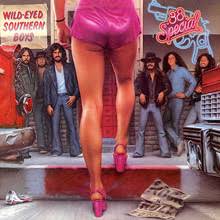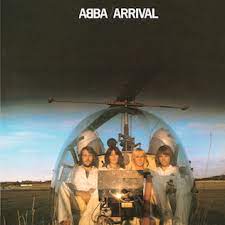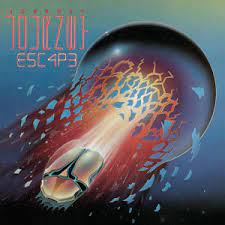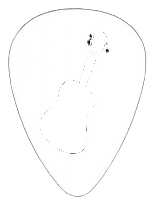🎸 70s American Rock Bands – Guitar Lessons & Classic Songs
The 1970s were a golden era for American rock bands, blending raw guitar power with unforgettable melodies and genre-defining riffs.
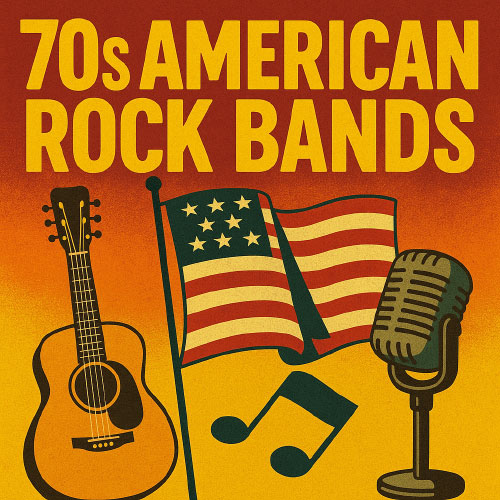
This page celebrates the best of that decade with guitar tutorials from legendary groups like Steppenwolf, Cheap Trick, Jefferson Starship, and more.
Whether you're drawn to the psychedelic edge of Blues Image, the smooth southern flair of Atlanta Rhythm Section, or the pop-rock charm of Gallery, these guitar lessons will take you back in time.
Each tutorial includes video demos, chord charts, and rhythm tips tailored for acoustic players.
🎸 Overview Video -
“Watch This Preview of My
70s American Rock Bands”
70s American Rock Bands List
1. Alive N Kickin --- Tighter Tighter2. Atlanta Rhythm Section --- Georgia Rhythm, Imaginary Lover, She Knows All My Tricks, So Into You
3. Blues Image --- Ride Captain Ride
4. Boston --- Amanda, Let Me Take You Home Tonight, More That A Feeling
5. Cheap Trick --- Dream Police, I Want You To Want Me, The Flame
6. Gallery --- I Believe In Music, It's So Nice To Be With You
7. Jefferson Starship --- Count On Me, Runaway
8. Steppenwolf --- Born To Be Wild, Magic Carpet Ride
9. The Buoys --- Give Up Your Guns
1. Alive N Kickin Songs - Learn To Play On Guitar
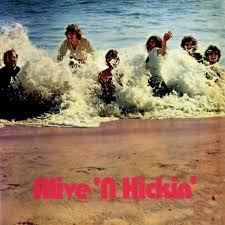
Tighter Tighter is a perfect one-hit-wonder pop-rock track from their self-titled 1970 album Alive 'N Kickin'.
Written and produced by Tommy James, the single shot to No. 7 on Billboard Hot 100—an upbeat earworm of the era.
Chords And Strumming
For rhythm here you can play a down down up down up down up and repeat rhythm pattern in standard tuning and some lead required. The chords you'll need is a D, G, Em, A and a C.
Guitar Lesson Details - (chords & lyrics sheet incl with lesson)
Back To Song List
2. Atlanta Rhythm Section Songs - Learn To Play On Guitar
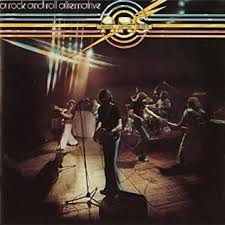
Georgia Rhythm appears on the 1976 album A Rock and Roll Alternative.
“Georgia Rhythm” reached No. 68 on the Billboard Hot 100.
The song captures the band’s Southern roots with its smooth melody and authentic feel—like a melodic postcard to their Georgia heritage. While not their biggest hit, it showcases the sound that laid the groundwork for their later radio success.
Chords And Strumming
This one has a key change that starts with the chords C, F, G and a A# and then moves up two frets to a D and also an A included in the chords while in standard tuning. Some lead in here with a down up pause up and repeat pattern as well with down strokes.
Guitar Lesson Details - (chords & lyrics sheet incl with lesson)
Back To Song List
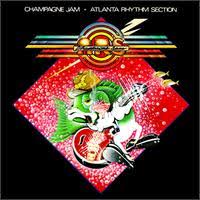
Imaginary Lover was released in early 1978 as the lead single from their breakthrough platinum album Champagne Jam.
This song became the band's second Top 10 hit, peaking at No. 7 on the U.S. Billboard Hot 100 and reaching No. 9 in Canada.
A quirky bit of trivia: a radio station once played the track at the wrong speed (45 rpm), making the vocals sound like Stevie Nicks—prompting Nicks herself to say it “gave [her] the chills”.
The song’s lyrical theme—celebrating fantasy over real romance—coupled with its smooth groove, made it a standout in their catalog.
Chords And Strumming
Another one in standard tuning with a down down up up down up down up shuffle rhythm pattern with some lead required here. For chords you'll need an Am, F, E7, C and a D.
Guitar Lesson Details - (chords & lyrics sheet incl with lesson)
Back To Song List
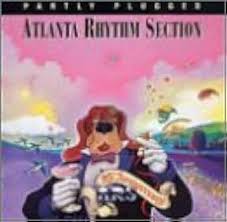
She Knows All My Tricks appears on the bands 1997 Partly Plugged album.
“She Knows All My Tricks” shows ARS in a stripped-down yet soulful mode.
Written by long-time collaborators Buddy Buie, J.R. Cobb, and Ronnie Hammond, the song blends introspective lyrics with warm acoustic textures. Though it didn't chart prominently, it highlights the band's continued creative spirit—offering something fresh while honoring their stylistic roots in Southern rock.
Chords And Strumming
I play this one in drop D tuning and with a capo 2nd fret and a down up down up and repeat rhythm pattern. Chords you'll need in this one are D, A, G, E7 and a Gb, Ab and an A#.
Guitar Lesson Details - (chords & lyrics sheet incl with lesson)
Back To Song List
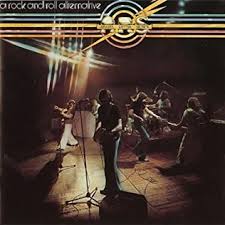
So Into You emerged in January 1977 as the breakout single from Atlanta Rhythm Section’s sixth album, A Rock and Roll Alternative.
Its smooth groove and romantic lyricism quickly struck a chord with listeners — climbing to #7 on the U.S. Billboard Hot 100 and securing the #1 spot on the Mainstream Rock chart. In Canada, the song was even more of a smoldering success, soaring to #2, trailing only behind the Eagles’ "Hotel California".
The story goes that the song’s inspiration was rumored to be Leslie Hawkins, one of Lynyrd Skynyrd’s backup singers — though that's never been confirmed and it remains ARS’s signature hit and one of the most enduring Southern rock ballads of the late ’70s.
Chords And Strumming
I play a 3rd fret capo on this one with a down down up down up down up rhythm pattern with some bass riffs blended in but there is also some lead in here and plated in standard tuning. For chords here you'll need a Dm, A#, Gn, Am7 and an A7.
Guitar Lesson Details - (chords & lyrics sheet incl with lesson)
Back To Song List
3. Blues Image Songs - Learn To Play On Guitar
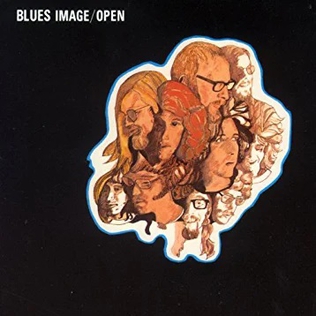
Ride Captain Ride hails from the American rock band Blues Image. It was written by the band's singer and guitarist Mike Pinera and their keyboardist Frank "Skip" Konte. The song is on their 1970 album, "Open."
When it was released as a single in the spring of 1970, it became very popular, reaching No. 4 on the US and Canadian charts. It was Blues Image's only Top 40 hit and also reached No. 23 in Australia.
Chords And Strumming
This one you can play with a steady down up pause up down up pause up in standard tuning. A few riffs in here with the chords D, C, Em, G, A, A#, A7 and an E.
Guitar Lesson Details - (chords & lyrics sheet incl with lesson)
Back To Song List
4. Boston - Learn To Play On Guitar
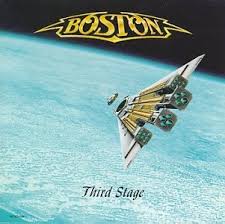
Amanda was released in 1986 on the long-awaited album Third Stage, and marked Boston’s triumphant return after an eight-year studio break.
The power ballad soared to #1 on the Billboard Hot 100, becoming the band’s only chart-topping single in the U.S. Despite no official music video, radio airplay alone catapulted the song to success.
Written by Tom Scholz, “Amanda” features soaring vocals and melodic guitar lines that perfectly capture the emotion of young love and regret, making it a soft rock staple of the 80s.
Chords And Strumming
You can play this one in standard tuning with down down up down down up and repeat rhythm pattern. A bit of blended in picking into the rhythm. The chords you'll need here are G, C/G, Em, Bm, G6, C, Am, Am/G, D, Dsus, E and a D/Gb.
Guitar Lesson Details - (chords & lyrics sheet incl with lesson)
Back To Song List
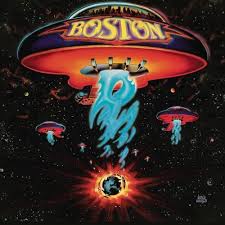
Let Me Take You Home Tonight appeared as the final track on Boston’s groundbreaking 1976 debut album Boston.
The track offers a more relaxed, heartfelt tone compared to the album’s high-energy anthems. Sung by drummer Sib Hashian with backing by Brad Delp, it adds a refreshing dynamic to the record.
Though never released as a single, it remains a fan favorite and showcases the band’s ability to blend tender lyrics with a solid rock groove. The song helps round out one of the best-selling debut albums in rock history.
Chords And Strumming
I play this one in standard tuning with a down down up down up down up rhythm pattern with accents throughout the song. A bit of lead here with the chords D, C, G, A, Em, Bm, Am, F, Am7, Bm/A, G6, Am/G and an A/Db. There is a section at the end but I don't teach that where the vocals of super high and an addidional E and a B chord is needed.
Guitar Lesson Details - (chords & lyrics sheet incl with lesson)
Back To Song List
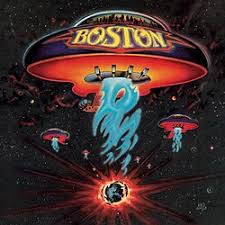
More Than A Feeling is arguably Boston’s most iconic song and was the lead single from their 1976 self-titled debut that became an instant classic.
The track climbed to #5 on the Billboard Hot 100 and helped drive the album’s massive commercial success.
Written and meticulously crafted by Tom Scholz in his basement studio, the song is known for its crisp guitar riff, layered harmonies, and lyrical nostalgia. It has been featured in countless films, TV shows, and video games, and is often cited as a defining song of 70s arena rock.
Chords And Strumming
This song has some arpeggio as well as down stroked and a down up down up rhythm pattern. Some lead required in this one with the chords D, C, G6, G, Am, Em, A7sus, A7, Bm and an A and played in standard tuning.
Guitar Lesson Details - (chords & lyrics sheet incl with lesson)
Back To Song List
5. Cheap Trick Songs - Learn To Play On Guitar
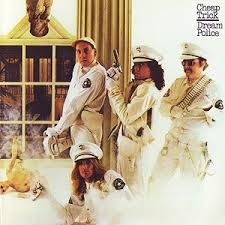
Dream Police was released in 1979 as the title track from their fourth studio album, Dream Police
The song combines power-pop energy with symphonic rock textures. It reached #26 on the Billboard Hot 100, driven by its infectious hook and quirky lyrics about paranoia and surveillance.
With its blend of strings, synths, and Rick Nielsen’s signature guitar riffs, “Dream Police” was both satirical and futuristic — capturing the late-70s rock vibe while foreshadowing the polished direction of 80s arena rock. It remains a staple of Cheap Trick’s live shows.
Chords And Strumming
This one you can play with manly down strokes and with some lead and in standard tuning and a capo 2nd fret. For chords you'll need a D, A, G, Em, Bm, C, Gb, A#, Dm and a Gm.
Guitar Lesson Details - (chords & lyrics sheet incl with lesson)
Back To Song List
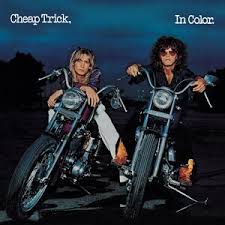
I Want You To Want Me was originally recorded for their 1977 album In Color but it didn’t reach iconic status until its live version was released in 1979 on Cheap Trick at Budokan.
That version became the band’s breakthrough hit, climbing to #7 on the Billboard Hot 100 and skyrocketing them to international fame.
With Robin Zander’s pleading vocals and Nielsen’s jangly guitar, the song walks a perfect line between power pop and glam rock. Its call-and-response chorus has become one of the most recognizable singalongs in rock history.
Chords And Strumming
This one I play in standard tuning and mainly with down strokes with the odd up stroke and with the chords A, G, D, Gbm, E, B and an A/Ab. Some lead required in this number.
Guitar Lesson Details - (chords & lyrics sheet incl with lesson)
Back To Song List
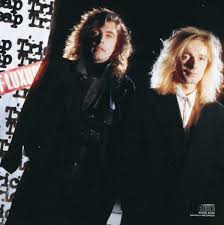
The Flame was a notable shift in tone and is a power ballad released in 1988 on the album Lap of Luxury, marking Cheap Trick’s commercial comeback.
It became their first and only #1 hit on the Billboard Hot 100. Unlike their earlier power-pop anthems, this track leans into emotional vulnerability, with lush production and Zander’s heartfelt vocal delivery.
Though a departure from their typical sound, “The Flame” introduced a new generation to the band and solidified their staying power in the ever-evolving world of rock radio.
Chords And Strumming
This song is played here with a capo on the 2nd fret and with a steady down up down up rhythm pattern. Some of the picking here is blended into the rhythm and can be played with down strokes. The chords here are G, A, Bm, D and a C chord.
Guitar Lesson Details - (chords & lyrics sheet incl with lesson)
Back To Song List
6. Gallery - Learn To Play On Guitar
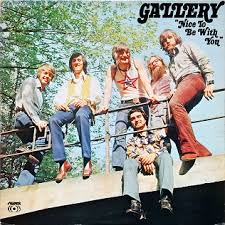
I Believe In Music is a song originally written by Mac Davis.
“I Believe In Music” was covered by Gallery and included on their 1972 debut album Nice to Be with You. Gallery’s version infused a breezy soft rock sound into the already uplifting anthem, celebrating the universal power of music as a force for good.
While the Mac Davis version charted in 1970, Gallery’s cover found modest regional success, especially on adult contemporary radio, adding to their early ‘70s appeal as a feel-good, harmony-driven band
Chords And Strumming
Only four chords in this one from Mac Davis but Galley plays is two frets higher in A so with my version in G just play a capo 2nd fret and in standard tuning. Some lead required with a down down up down up down up down up down up rhythm pattern, The chords here are a G, Am, C and a D.
Guitar Lesson Details - (chords & lyrics sheet incl with lesson)
Back To Song List
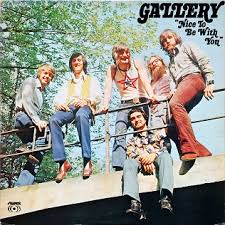
It's So Nice To Be With You was the the 1972 breakout hit single for Gallery, written and produced by Jim Gold, who also fronted the band.
Released on their debut album Nice to Be with You, the song climbed to #4 on the Billboard Hot 100, eventually becoming a gold-certified single.
With its catchy acoustic rhythm, layered harmonies, and romantic lyrics, the tune became a staple of early ’70s soft rock radio. It's often remembered for its warm, uplifting vibe and easy-listening appeal — the perfect soundtrack for sunny afternoons.
Chords And Strumming
I play a root down up bass up down up for rhythm here and with a capo on the 2nd fret. A bit of lead here with the chords G, C, D and a Bm in standard tuning.
Guitar Lesson Details - (chords & lyrics sheet incl with lesson)
Back To Song List
7. Jefferson Starship - Learn To Play On Guitar
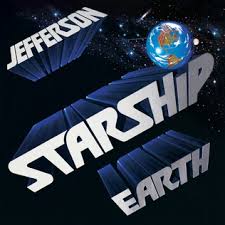
Count On Me is a soft rock classic by Jefferson Starship, released in 1978 on their album Earth. Written by Jesse Barish, the song marked a stylistic shift for the band, leaning away from their earlier psychedelic roots and embracing a more radio-friendly pop-rock sound.
It was released as a single and became a major commercial success, reaching #8 on the Billboard Hot 100. Featuring smooth vocals and a gentle melody, “Count On Me” helped solidify Jefferson Starship’s presence in the late-’70s rock scene.
The track remains one of their most recognizable hits and a standout from their evolving musical journey.
Chords And Strumming
You can play this one in standard tuning with a capo 2nd fret and with a root down up root up down up rhythm pattern and with a few quick riffs with the chords D, G, C, Am, B7, Em, E7 and a D/Gb.
Guitar Lesson Details - (chords & lyrics sheet incl with lesson)
Back To Song List
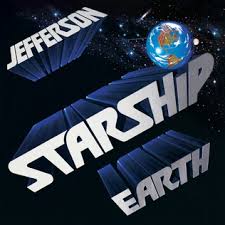
Runaway is a smooth, melodic track from Jefferson Starship’s Earth album, released in 1978.
Sung by lead vocalist Marty Balin, the song became a Top 20 hit, reaching #12 on the Billboard Hot 100. Known for its soft rock feel and emotionally driven lyrics, "Runaway" stood out from the band’s harder-edged earlier work and showcased their evolving sound during the late '70s.
The track remains one of their most radio-friendly and enduring hits from that era.
Chords And Strumming
I play this one in standard tuning with a down down up down up down up and repeat rhythm pattern. There are a few down stroke accent chops in here in places as well. Some lead in here as you play the chords D7, F, Cmaj7, Fmaj7, Dm, Gm and an Em.
Guitar Lesson Details - (chords & lyrics sheet incl with lesson)
Back To Song List
8. Steppenwolf Songs - Learn To Play On Guitar
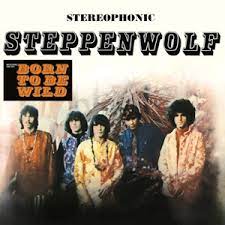
Born To Be Wild was released in 1968 from the bands first album simple entitled Steppenwolf.
It was their only single to chart in the UK, peaking at #30. In the US the song reached #2 and hit #1 in Canada. It also appeared in the 1969 film Easy Rider with Peter Fonda.
Chords And Strumming
Played with a capo 2nd fret and in drop D tuning with mainly down strokes. Some lead in this one with the chords D, Dm, F, G and a C.
Guitar Lesson Details - (chords & lyrics sheet incl with lesson)
Back To Song List
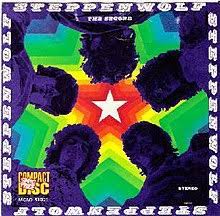
Magic Carpet Ride was the only single released from their 2nd album in 1968 called Steppenwolf II.
This one reached #1 in Canada and #3 in the US. The band continued putting out records and singles until 1981, so I class them here as a 70's band.
Chords And Strumming
I play this one in standard tuning with a down down up down up down down rhythm pattern with some lead required. For chords you'l need a D, C, G, C, E and an A#.
Guitar Lesson Details - (chords & lyrics sheet incl with lesson)
Back To Song List
9. The Buoys - Learn To Play On Guitar
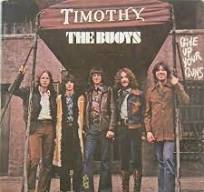
Give Up Your Guns is a song written by Rupert Holmes and D. Jordan in 1972. It tells a big story about a bank robber who runs away. The song was sung by The Buoys for their first album called "The Buoys."
Even though "Give Up Your Guns" only reached number 84 on the charts, it became really popular in Europe. It was a big hit there when it first came out and again when it was released again in 1979.
Chords And Strumming
For rhythm here you can use a 1-2-3 arpeggio up down up down up and down up down up in the ch in standard tuning. I added a little picking sequence at the end of this one while using the chords Em, Am, F, G, C and A# throughout the song. Original key is a capo 2nd fret.
Guitar Lesson Details - (chords & lyrics sheet incl with lesson)
Back To Song List
American rock in the 70s had attitude, depth, and variety—and the songs featured here showcase just how wide that spectrum was. From the driving pulse of Steppenwolf’s biker anthems to the soulful hooks of Alive N Kickin, there’s something here for every guitarist who loves this iconic era.
Explore each band’s contribution, sharpen your rhythm chops, and enjoy reliving some of the best rock moments ever recorded. New lessons are added regularly, so keep checking back for more 70s classics.
If you liked this 70s American Rock Bands page you might also like ... (click images)
Acoustic Versions Of Rock Songs
